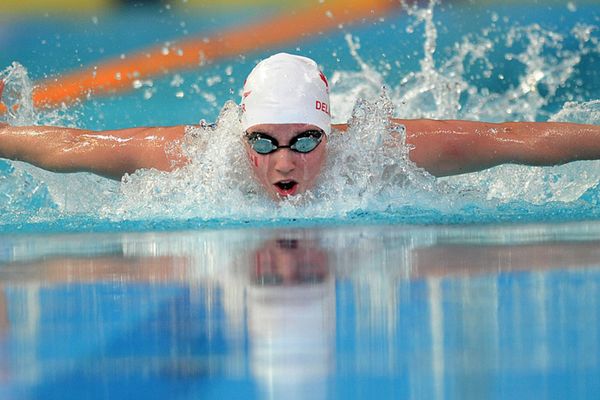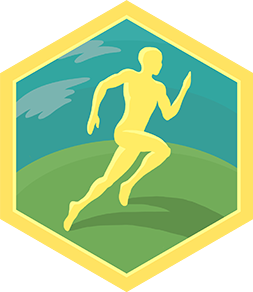Swim
Practice basic swimming skills: floating, kicking, and rhythmic breathing. Learn pool safety and build confidence while supervised by a responsible adult.



Step-by-step guide to practicing basic swimming skills
How to Start Swimming | 5 Must-Know Tips for Parents (Kids Swimming Lesson #1)
Step 1
Put on your swimsuit.
Step 2
Put on your goggles.
Step 3
Ask your adult supervisor to explain the pool rules and point out the shallow practice area.
Step 4
Do a 2-minute warm-up on the pool deck by marching in place.
Step 5
Enter the pool feet-first at the shallow end while holding the adult's hand.
Step 6
Hold the pool edge and practice blowing bubbles with your mouth in the water five times.
Step 7
Lie on your back while the adult supports your head and hips and relax to float for 10 seconds.
Step 8
Stand in shallow water and hold the kickboard while you kick your legs straight for 20 seconds.
Step 9
Practice rhythmic breathing by putting your face in the water and turning your head to the side to take a breath three times.
Step 10
Kick with the kickboard across a short distance while breathing to the side every three kicks.
Step 11
Try a gentle back float again and kick slowly on your back for 10 seconds.
Step 12
Exit the pool using the ladder or steps.
Step 13
Dry off with your towel.
Step 14
Tell your adult what you did well and what you want to practice next time.
Step 15
Share what you learned and your finished swimming practice on DIY.org.
Final steps
You're almost there! Complete all the steps, bring your creation to life, post it, and conquer the challenge!


Help!?
What can we use if we don't have a kickboard or goggles for this swim practice?
If you don't have a kickboard, use a pool noodle or a small inflatable float while you practice kicking for 20 seconds, and if you don't have goggles, focus on the five bubble-blowing reps and rhythmic breathing steps without them.
My child won't float or is scared to enter the water — what should we do during the session?
Repeat the 2-minute deck warm-up, enter feet-first while holding the adult's hand, and have the adult support the child's head and hips for the 10-second back float and practice until the child is comfortable.
How can we adapt the activity for different ages or skill levels?
For toddlers shorten the warm-up and floats (for example reduce the 2-minute warm-up and 10-second float), use more adult support during edge bubble-blowing and back floats, and for older or more confident children increase kicking to 40 seconds and lengthen kickboard distances.
How can we make this swim practice more challenging or personal after completing the steps?
Make it more challenging by timing the 20-second kicks and tracking breaths per three-kick cycle, setting a goal to increase distance or breathing rhythm each week, and share progress and what you practiced on DIY.org.
Watch videos on how to practice basic swimming skills
How to Teach a Child to Swim - 6 Simple Skills to Learn
Facts about swimming and water safety for kids
🌬️ Good swimmers exhale underwater and take quick inhalations between strokes — rhythmic breathing saves energy and keeps you calm.
🐬 In freestyle swimming the arms produce most forward propulsion while legs add balance and about 10–30% of thrust.
👀 Most pool accidents happen quickly and quietly, so active adult supervision is the single best safety step.
🌊 You float more easily in saltier water — the Dead Sea's high salinity makes it almost impossible to sink.
🏊♀️ Babies are born with a diving reflex that can make them briefly hold their breath and blink underwater.
How do I teach my child basic swimming skills like floating, kicking, and rhythmic breathing?
What materials and gear do I need to practice basic swimming skills safely?
What ages is swim practice for floating, kicking, and breathing suitable for?
What are the safety tips and benefits of practicing swimming with a child?


One subscription, many ways to play and learn.
Only $6.99 after trial. No credit card required


